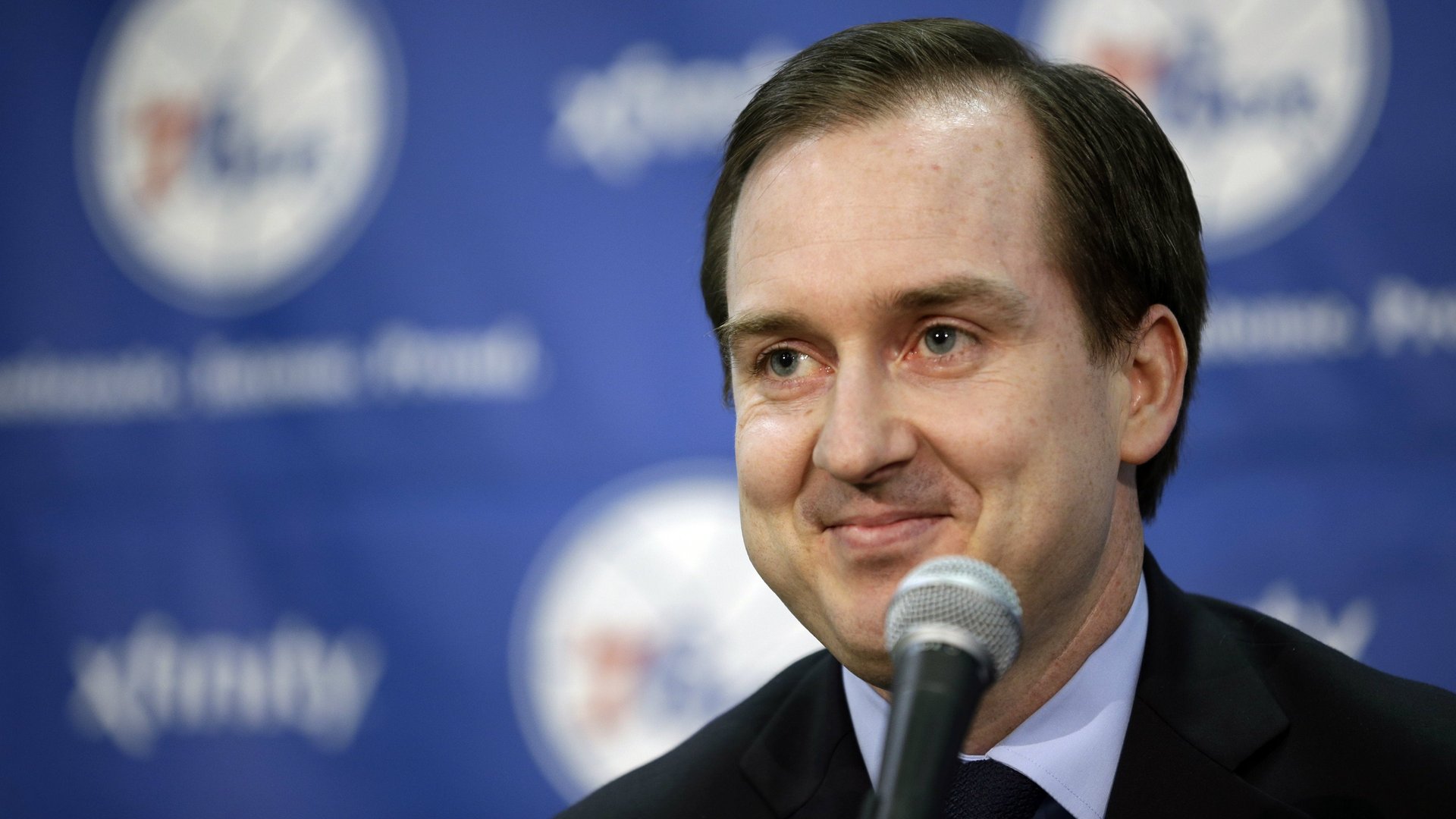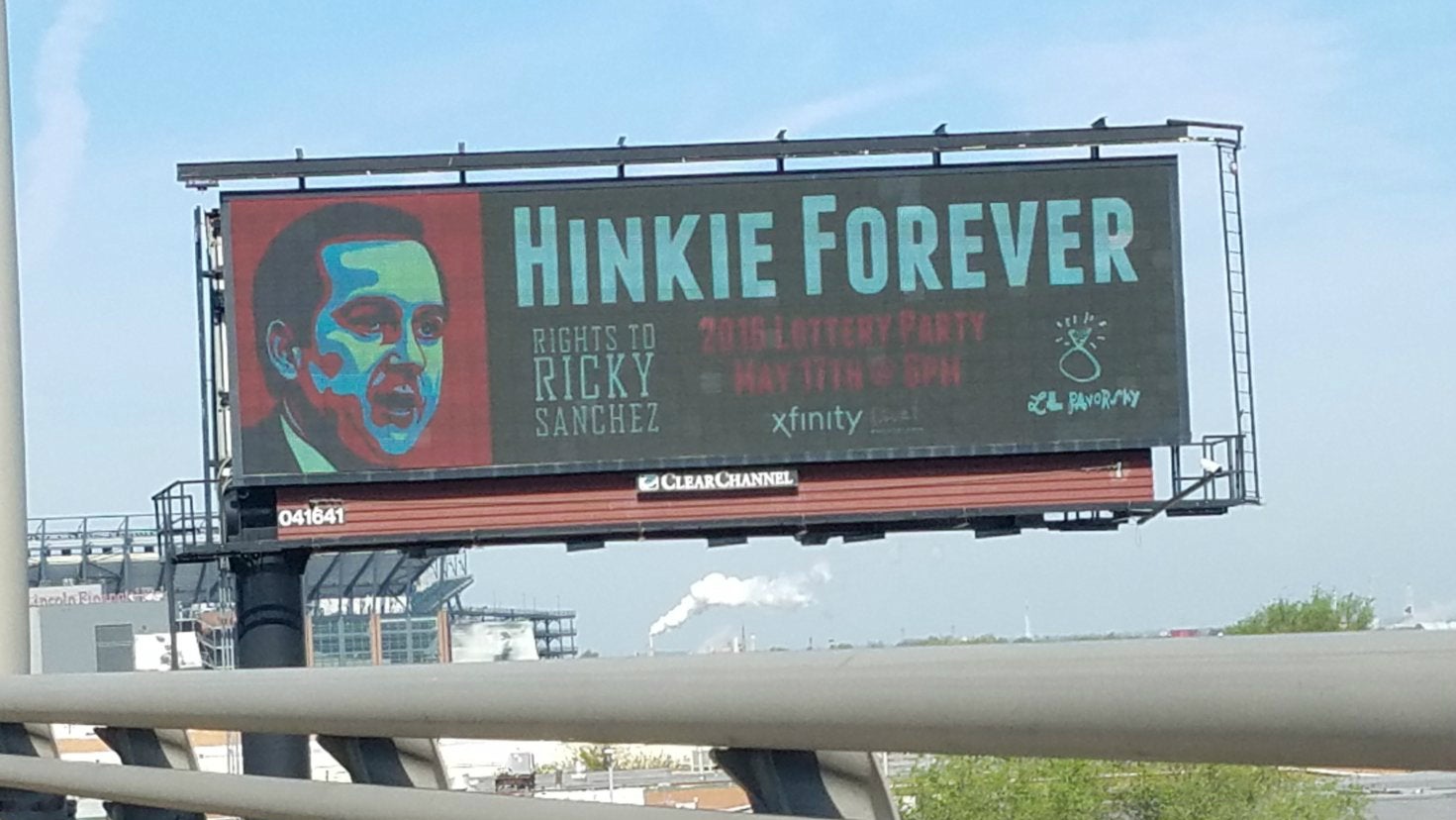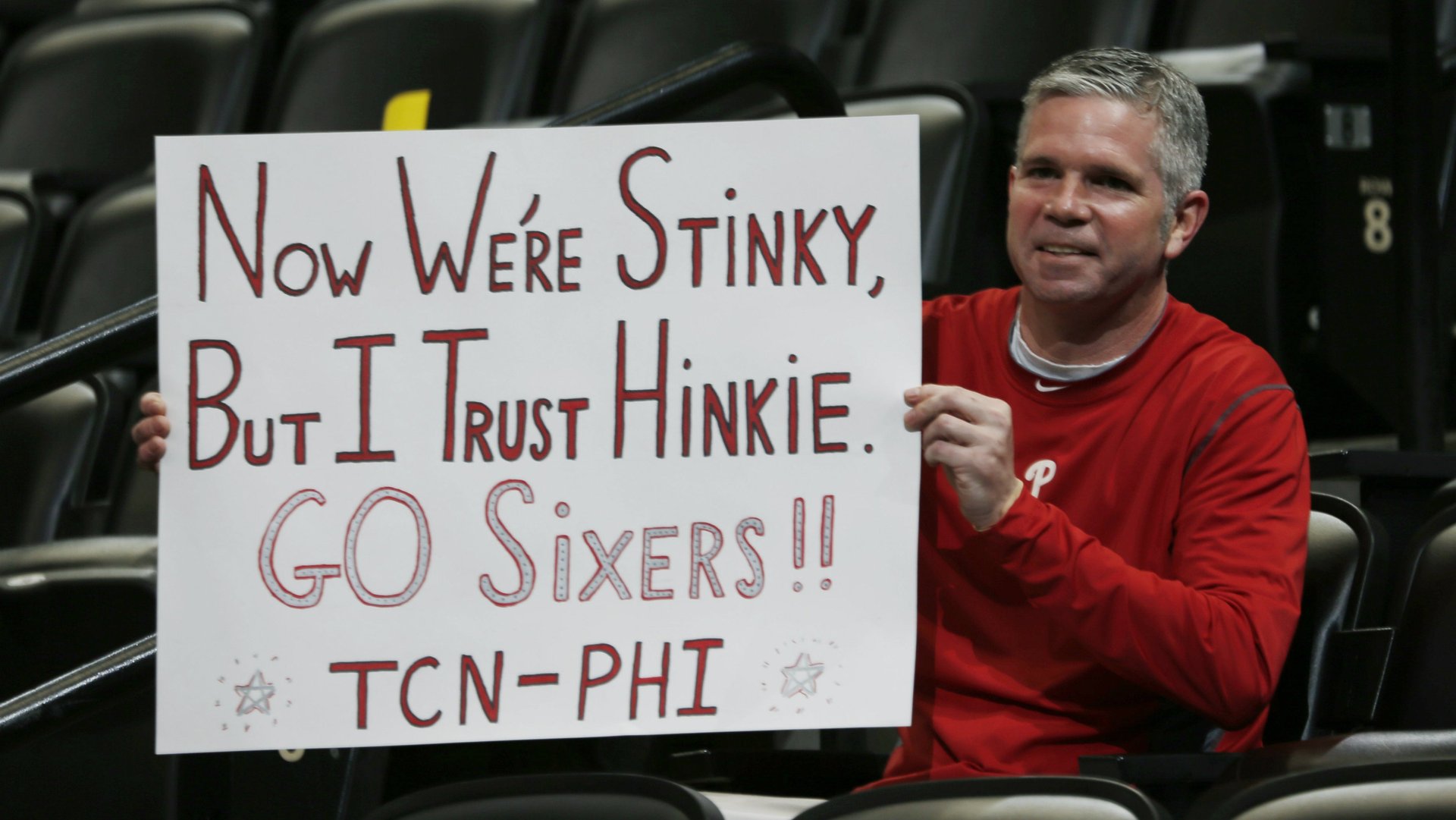“Trust the process”: How three years of losing on purpose turned a basketball team into winners
On Jan. 18, as the Philadelphia 76ers were about to pull off their best win in recent memory, against the Toronto Raptors, thousands of basketball fans began a strange chant.


On Jan. 18, as the Philadelphia 76ers were about to pull off their best win in recent memory, against the Toronto Raptors, thousands of basketball fans began a strange chant.
“Trust the process!” they screamed, as star center Joel Embiid motioned for them to raise the volume. “Trust the process!”
The night was the happy culmination of a nihilistic plan. In order to become winners, the 76ers had intentionally been one of the worst teams in professional sports history. And after three years, that strategy had worked. The 76ers have perhaps the brightest future of any team in the NBA.
The architect of that master plan was 76ers general manager Sam Hinkie. But nine months before that euphoric night, Hinkie had been forced out of his job.

An iconoclast who has been both vilified and canonized, Hinkie’s vindication came too late to save his job, but it has cemented his status as a strategic genius in sports.
“He did the kind of stuff people talk about late at night after three beers, because theoretically it just might work, but no one actually does,” according to a November Sports Illustrated profile. “Then he set fire to the lifeboats.”
The 76ers hired Sam Hinkie in May 2013. The team’s owners, led by private equity investors, chose him for his analytics acumen. They figured Hinkie, a Stanford MBA, could Moneyball the 76ers to greatness. When Hinkie interviewed for the job, he made it clear to the owners that he thought they were “a long way away” from winning big. The cupboard was bare of talent, and if they wanted to win a championship in the long term, their best way forward would involve a lot of losing in the short term.
Here’s his thinking: Historically, in the National Basketball Association (NBA), the teams that win championships rely on star players such as Michael Jordan and Lebron James. Hinkie believed the surest way for the 76ers to get a star of that caliber was to have a high pick in the amateur draft (the annual process through which newly eligible players are selected by the NBA’s 32 teams). The highest draft picks are awarded to the worst teams, and if the 76ers were bad enough for long enough, he argued, they would eventually get a great player. It would take patience though.
Hinkie warned his bosses, the team, and its fans that the short term would be painful, and it most certainly was. Almost immediately upon Hinkie’s hiring, the team began “tanking”—the sports term for losing on purpose. Hinkie traded the team’s best players and made no attempts to acquire players that would make it better.
Over the next three years, the 76ers were horrible. They lost more games than any other team, and broke the NBA’s record for consecutive games lost. It all culminated in the third season when the team won only 10 of 82 games, making it the second worst NBA team of all time. One prominent sports writer called the team an “abomination,” and another an “atrocity“. Observers called for the NBA to intervene and have Hinkie replaced with a manager who wouldn’t tank. The team’s attendance and tv ratings were among the lowest in the league.
But even at the worst depths of history-making failure, many of the team’s hardcore fans were steadfast in their support of Hinkie. Unlike his predecessors, Hinkie offered a concrete plan based on quantitative analysis. The team was an embarrassment on the court, but they were getting talented young players with high draft picks who might some day become stars.
“[Before Hinkie, the 76ers] just had mediocre teams playing mediocre basketball, being incredible boring… and having no plan,” said Michael Levin, a lifelong 76ers fan and host of the popular 76ers podcast The Rights to Ricky Sanchez. Levin was immediately enamored of Hinkie, he told Quartz. He was happy that the team was finally ”thinking long-term at expense of any short-terms gains.”
Levin and his podcast cohost Spike Eskin popularized the motto that would become synonymous with Hinkie’s long-game plan: “Trust the process.” “After a game, one of the 76ers players said that management had told him to just work hard and trust the process,” explained Levin. “We took that up as the rallying cry.”
Unfortunately for Hinkie and his fans, the owners were not so resolute. Under pressure from the owners of other NBA teams, who felt that the 76ers terrible play was bad for the league’s bottom line, the team hired a veteran general manager to oversee Hinkie in December 2015—midway through the third season. Although he wasn’t fired, Hinkie was marginalized. (Quartz has reached out to Sam Hinkie and the Philadelphia 76ers for comment and will update this story with any response.)
In April 2016, Hinkie stepped down. “Given all the changes to our organization, I no longer have the confidence that I can make good decisions on behalf of investors in the Sixers….” Hinkie wrote in his 13-page resignation letter to the 76ers board. The resignation letter served as a defense of his decision-making, as well as a kind of philosophical treatise that includes references to Elon Musk, cognitive science, the physicist James Clerk Maxwell, and Jeff Bezos’s 10,000 year clock. The letter cemented Hinkie’s reputation as a mad genius or a fool—all depending on your point of view.

This month, it finally became clear that Hinkie was right all along. The 76ers have won more than half of their games over the last month. The team’s talented young players are blossoming, and it is in a strong position to acquire more excellent players going forward.
Most emblematic of Hinkie’s success is the emerging stardom of the 76ers’ agile giant Joel Embiid. Hinkie drafted the 7-foot Cameroonian in 2014 even though he had a broken bone in his foot that would not allow him to play for six months. Embiid was a player of immense talent, and because the 76ers were not worried about winning in the short term, the injury did not deter Hinkie from drafting him. Only 22 years old, Embiid already looks like he is likely to become one of the best players in the NBA, if he isn’t already.
Embiid’s basketball skills are nearly matched by his devilish wit. A fan favorite who had a close relationship with Hinkie, Embiid nicknamed himself “The Process.” A prolific social media poster, Embiid often cheekily nods to Hinkie, and popularized the meme “Hinkie died for our sins” (now available in t-shirt form, too).
Embiid even used the victory of US President Donald Trump as a chance to reference Hinkie’s plan. “Well America is tanking!!! All we can do is Trust The Process…” Embiid tweeted.
Embiid is not the only Philadelphian who won’t let the 76ers move on from Hinkie. Since he resigned, Hinkie’s fans put up a giant billboard of him along a busy stretch of highway, and fans regularly wear shirts with Hinkie’s name on the back. The “cult of Sam Hinkie” is thriving.
As for Hinkie himself, he seems less hung up on the past. “It’s clear now that I won’t see the harvest of the seeds we planted.” Hinkie wrote in his resignation letter. “That’s OK. Life’s like that.”
Now living in Palo Alto, California Hinkie is preparing himself for an NBA comeback. Hinkie told Sports Illustrated that he sometimes jokingly tells Silicon Valley types that he is “like a founder that got pushed out for professional management.”
Sam Hinkie helped the 76ers take the hard and necessary step of sacrificing short-term gratification for long-term success, and then became the fall guy when the team ran out of patience. The decision to fire Hinkie will loom over the 76ers. They should have trusted the process.